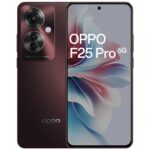HealthifyMe vs. Noom vs. MyFitnessPal
April 13, 2024

Each platform has carved out a distinct niche in the crowded wellness app market. HealthifyMe’s local focus, Noom’s psychological grounding, and MyFitnessPal’s extensive database cater to varied user preferences, highlighting the diverse strategies within the health tech industry. Their future success will depend on how well they adapt to emerging health trends and consumer demands.
Overview HealthifyMe, Noom, and MyFitnessPal represent three diverse approaches to digital health and wellness, each with unique strategies and markets. This analysis delves into their business models, technological integration, market positioning, and customer engagement strategies to understand their strengths, weaknesses, and competitive edges.
Business Models and Revenue Streams
- HealthifyMe: Primarily based in India, it operates on a freemium model where basic features are free, but advanced functionalities like personalized coaching require a subscription. HealthifyMe leverages localized content and services tailored to Indian dietary habits.
- Noom: Utilizes a subscription model that focuses heavily on behavioral change and long-term weight loss strategies. Noom’s approach is deeply rooted in psychology, specifically cognitive behavioral therapy, to help users understand and change their eating and lifestyle habits.
- MyFitnessPal: Offers a vast database of nutritional information and a robust tracking system. It operates on a freemium model similar to HealthifyMe, with premium features that provide more detailed nutritional analysis and personalized recommendations.
Technological Integration and Innovation
- HealthifyMe: Uses artificial intelligence to offer tailored diet plans and fitness coaching. The Ria AI coach is a standout feature, providing real-time suggestions and feedback.
- Noom: Differentiates itself by incorporating psychological techniques into its user interface, making the app not just a tracker but a tool for changing behavior and lifestyle.
- MyFitnessPal: Strong in data analytics, offering detailed reports on calorie intake and expenditure. Its integration with numerous fitness devices and apps makes it highly versatile and user-friendly.
Market Positioning and User Engagement
- HealthifyMe: Strongly positioned in India and Southeast Asia, with plans to expand further. The app caters specifically to local tastes and wellness trends, which is a significant advantage in its primary markets.
- Noom: Targets a global audience, particularly in the U.S., focusing on individuals looking for a scientific and psychological approach to weight loss. Noom’s unique selling proposition is its emphasis on mental health and sustainable lifestyle changes, appealing to a niche but growing segment.
- MyFitnessPal: With a broad global reach, MyFitnessPal appeals to users seeking straightforward diet and exercise tracking. Its community features, like challenges and social sharing, enhance user engagement and retention.
Competitive Advantages and Challenges
- HealthifyMe:
- Advantages: Strong local adaptation, personalized services.
- Challenges: Limited global brand recognition, heavy reliance on the Indian market.
- Noom:
- Advantages: Unique psychological approach, high user commitment.
- Challenges: Higher cost due to intensive coaching, may not appeal to users looking for quick solutions.
- MyFitnessPal:
- Advantages: Extensive food database, high interoperability with other apps and devices.
- Challenges: Generic approach may lack the depth needed for users seeking personalized guidance.
Valuations
- HealthifyMe: Last publicly reported in 2023, HealthifyMe reached a valuation of around $500 million USD. This was following a significant funding round that aimed to expand its technological offerings and geographic footprint, primarily focusing on growth within India and other Asian markets.
- Noom: Noom achieved a substantial valuation increase following various funding rounds, with a reported valuation of around $3.7 billion USD in 2021. This valuation reflects the company’s robust growth trajectory and its unique position in the market by incorporating psychological principles into weight loss and wellness.
- MyFitnessPal: After being acquired by Under Armour in 2015 for $475 million USD, MyFitnessPal was later sold to the private equity firm Francisco Partners in 2020. While the exact details of the sale were not fully disclosed, it was part of a strategic realignment by Under Armour. Estimates suggest the sale was around $345 million USD. The valuation may have fluctuated since then, depending on the app’s performance and strategic developments.
Analysis of Valuations
These valuations reflect not only the current financial status and growth potential of each company but also their strategic positions within the health and wellness market:
- HealthifyMe has leveraged its local market knowledge and technological capabilities to build a strong presence in India, a rapidly growing market for health and wellness apps. However, its valuation is significantly lower compared to global competitors, highlighting potential growth opportunities and challenges in scaling internationally.
- Noom‘s high valuation is indicative of its unique market niche and strong user engagement driven by its psychological approach to health and wellness. This valuation also suggests investor confidence in its sustainable revenue model and long-term customer retention strategies.
- MyFitnessPal‘s valuation, especially in the context of its sale to Francisco Partners, might reflect challenges in sustaining growth post-acquisition or shifts in strategic focus under new ownership. However, it remains a popular platform due to its extensive food database and integration capabilities with other fitness tools and services.
Strategic Implications
The varied valuations point to different strategic priorities for each company:
- HealthifyMe may need to explore international partnerships and innovative technology enhancements to boost its valuation and competitive edge globally.
- Noom could focus on expanding accessibility and affordability to maintain its growth trajectory and justify its high valuation.
- MyFitnessPal might benefit from further diversification of its features, focusing on personalized health insights and community-building features to regain momentum and possibly increase its valuation.
These strategies could help each company enhance its position in the competitive digital health and wellness landscape, potentially leading to higher valuations in future funding rounds or acquisitions.
Conclusion and Strategic Recommendations
HealthifyMe should consider expanding its technological capabilities to include more integrations with global health ecosystems and wearable technologies, potentially partnering with international health brands to gain wider recognition.
Noom could benefit from exploring lower-tier subscription models to attract users deterred by the high cost, thereby expanding its market base without diluting its core value proposition.
MyFitnessPal might enhance its offering by incorporating more personalized nutritional advice and motivational tools, moving beyond tracking to become a more comprehensive health management platform.








